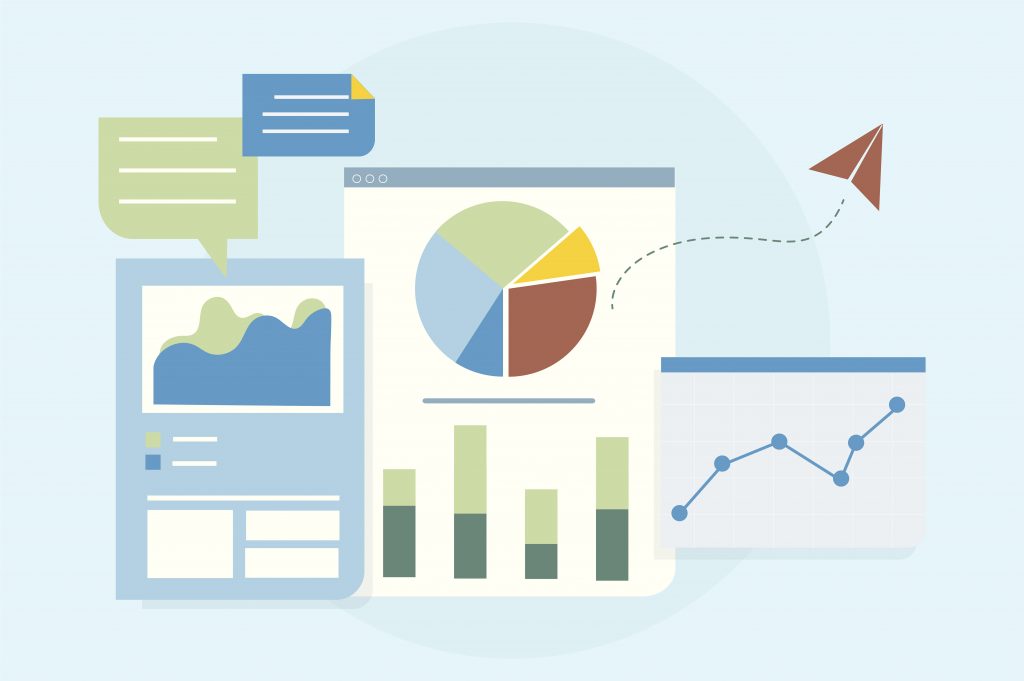How to use Google Analytics to increase website traffic
First, before delving into how to increase your traffic, you have to understand why people come to your website.
Of course, in some cases, they are coming from Google or another search engine, a social network or sometimes from another site. This means that somewhere along the line, someone was interested in what your website had to offer.
This doesn’t mean you have to update every single day, but you should try to update your website’s content as frequently as you can.
For example, if you run an eCommerce site and have been blogging for a while, you’ve probably seen that your pages are getting indexed and people are visiting. Those visits could be directly from Google, your email newsletter list, social media or even other search engines. However, if you stop introducing new content, in Google Analytics, you’ll probably notice a decline in traffic.
A better and more accurate way to know why people are visiting your site is to learn how to understand a basic page report in Google Analytics.
Understanding Page reports in Google Analytics to increase website traffic
At the basic level, Page reports can give you very good insights into why people are visiting your website. In the Page report, look at the following:
- Page Views
- Average time on site
- Bounce rate
- Acquisition
- Behaviour
Here’s a little more information about what you’ll find in each of those sections.
Page Views
Page Views are when the visitor clicks and lands on a page that is being tracked by Google Analytics. In the case of counting page views, an example of Google Analytics tracking a page view would be going to a second page on the same website and then returning to the originating webpage. This would end up counting as two-page views.
Average time on site
The average time on a site is how long, on average, that visitors stay on your website. This is only counted with legitimate page views, not when someone is exiting the site or if they’ve left the site right away. This might seem confusing, but Google can’t track when a person leaves the site, only the last page they visited. So, if they initially came to the site and never visited a second page, then basically no page view was counted, and for average time on site, Google Analytics gave 00:00 for the time.
So, how can you get people to stay on your site longer? Here are a few suggestions:
- Create video content to appear alongside any images or text content on a page.
- Create interactive content such as quizzes.
- Encourage visitors to leave comments on blog posts.
The page will have to load again after they submit the comment.
Bounce rate
Bounce rate is an average of how many times people only visit one page on the site and then leave. With bounce rate, you don’t want the percentage to be high. In fact, you want it to be as low as possible.
To decrease bounce rate, give visitors clear options for what to do next on your site. For example:
Include links to related content in your blog posts.
Use strong calls-to-action to encourage visitors to click through to other pages on your website, such as product pages.
Acquisition
The Acquisition section is where you find out where your traffic came from. You can find this under Traffic Source. This could be from Google search, another search engine, social networks or other websites.
The Acquisition report is not necessarily a basic report, but you can easily check out the Overview tab for an idea of where to put more effort into promoting your work. For example, this report can provide insight into which social sites are driving the most traffic to your website.
You can use this information to focus more on those social networks and less on platforms with lower traffic referral numbers. Or, if you feel that your business can really benefit from a strong presence on a social network that isn’t currently referring much traffic to your website, increase your efforts on that network.
One of the really cool areas to look at within the Acquisition area of Google Analytics is Location, especially if you’re a local business owner trying to target your city, state, country or region. For example, if you’re a business in Phoenix, like a restaurant, and you’re trying to gain more customers, you obviously don’t want your website to target an audience located in Japan.
Behaviour
Behaviour allows you to look into what people are seeing on your site and how you can improve it. In fact, this area can let you know what pages people are finding most interesting, and if they are going to another page.
The Behaviour flow area in Google Analytics can help you build more content around the areas that people are enjoying, as well as correct any content that needs to be linked to other related content on your website.


